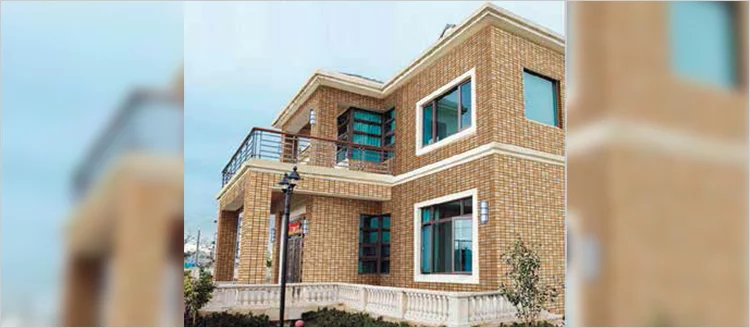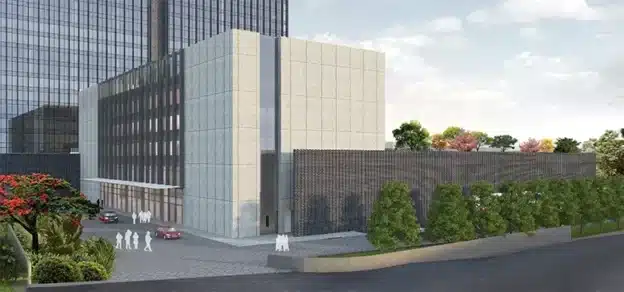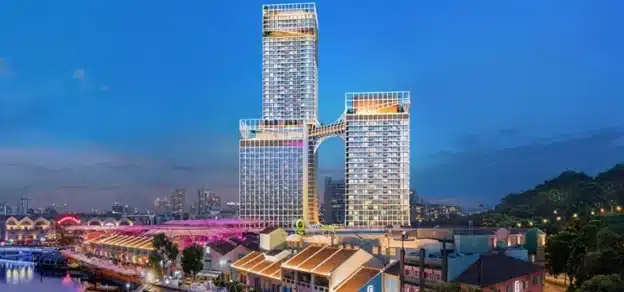Facade is the most striking feature in any structure. It gives us an instant impression of the design of that structure. One can sense the volume of space looking at the façade. But unfortunately, in most cases, people do not try to develop them, thereby leaving a dead look on the outside. Many developers do not allocate a fixed budget for the façade. Also, some designers do not incorporate façade design elements to the original space planning, thereby resulting in an unsuccessful product.
If one goes through a proper design process, it will give a much better output not only to the internal space planning but also to the elevation of the structure. Thus, designers need to be careful not to take elevation design for granted and always integrate them with the original space planning.

When it comes to façade design, the first thing that comes to mind is the treatment of external features like surface of the structure and the windows.
These two are the most prominent features visible to one’s eyes. The construction industry has seen multiple changes in the last few decades. India, being the fastest growing developing nation, the other countries find our markets very attractive, thereby the availability of all the brands have become very accessible due to trade shows and marketing all around the world. Many companies have altered their material products to suit our climate. This gives the designers ample number of options to play with the designs and truly come up with a spectacular solution. Innovative technologies have given some ground breaking materials to the construction industry that not only make the façade aesthetically striking, but are also to provide nature friendly and sustainable features.

Talking about products that can be used externally for façade, the simplest and the most widely used product are paints. Paint technology has evolved with time, giving the designer more varieties and options to play with. Some paints also have elasticity property, which prevents water from seeping through any cracks that may have developed on the structure over a period of time due to external factors like sun, wind and rain. The latest variety of paints help provide extra coating, which assists in preventing external forces to seep through the façade. A large variety and qualities of paints are available in the market which helps the designer with additional options.
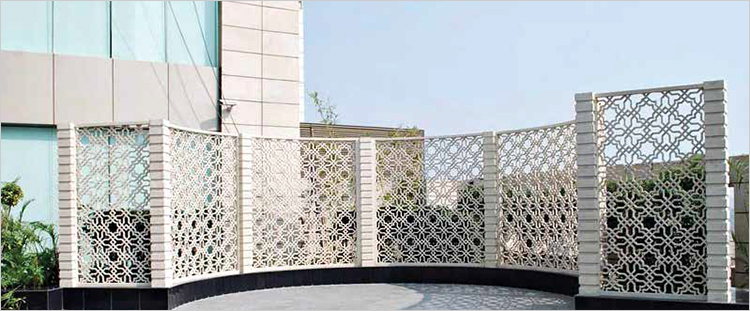
Another product that goes well in combination with paints is external texture. The texture is made out of crushed stones and aggregates and can be used to create effects of natural stones, granite, brick, etc (Fig. 1) on the exterior façade. The paint pigment can be mixed with the texture to give the desired colour.
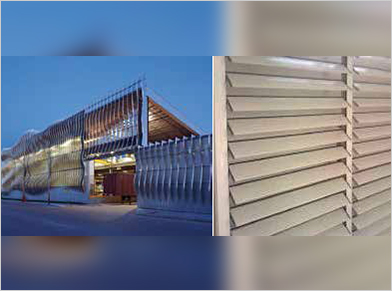
The advantage of using texture over plain paint is, more protection of the surface of the façade and more design options at a much cheaper rate than using any of the natural stone, if there is a budget constraint and one needs a natural stone effect for their façade. The other advantage of textures is that they provide additional waterproofing protection to the façade.
Natural materials like stone and granites have been used to beautify the buildings since a very long time. These are timeless designs and expressions, and even today gives us a feeling of grandness. But the issue with these natural materials today is their availability, price, and quality. Availability of natural materials has deteriorated since we have exhausted most of their sources.
Also, there is a lot of iron content present in them. In a city with humid atmosphere like Mumbai, it causes stone decomposition, thereby leaving a shabby rust colour on the façade. Also these stones need to be of particular thickness only to resist the external surrounding which make them heavier, thereby increasing the load on the structure.
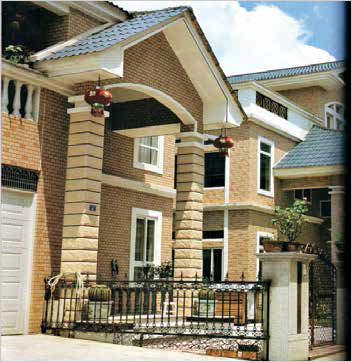
A good substitute to the natural stones is processed stone, where natural stones are crushed to powder and are glued together with a colour pigment (Fig. 2). They are moulded into the shapes of bricks and applied on the facade. The advantage here is, that they are natural (using natural material), give that natural look, and are much lighter in weight than the actual stone. The blending of the colour pigment assures that the colour of this processed stone does not fade even in the presence of harsh natural forces like the sun, wind, rain and snow.
Classical architecture is liked by many, and to recreate those classical elements using natural stones turns out to be extremely heavy in weight and is very expensive. A very good substitute called GRC (glass reinforced concrete) is used to make these classical elements for such structures. The major advantages of GRC are that texture of GRC looks very similar to the actual stone but is 2/3rd in weight, and very economical in comparison. Also, due to less wastage of materials in GRC, the natural stones which are exhausting very quickly can be preserved (Fig. 3). Aluminium fins are widely used to cover the less attractive areas of a façade like the toilet ducts or parking podiums, which kill the look of the structures (Fig.4).
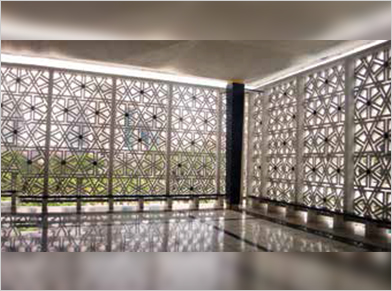
Exterior ceramic tiles (up to 6mm thin) have been a revolutionary product in the market. They are maintenance free, light weighted and easy to fix (Fig. 5) .
Traditional materials have been used for a very long time. Substitutes like processed stone, GRC, electro chromatic glass, etc. for these traditional materials can give a unique look with an innovative touch. We can copy nature and learn from it.
The new trends that the general public has started appreciating are the more natural and unfinished look of the facades eg: exposed concrete, exposed steel designs, exposed bricks, metal, etc. The techniques are very simple, which can be moulded and applied, and connects us to nature. These materials have high durability properties and they act as insulation against outside heat and cold, thereby making them very sustainable in nature. For example, the use of perforated metal sheets on the exterior facades, allows air and light to pass, at the same time creating a very unique design. Decorative Jaalis made of metal, steel, brass, copper, and aluminium, provide natural shade on the inside (Fig. 6). The use of solid acrylic surfaces (commonly known as Corian, which is a product of DuPont) is also seen in many facades.
The most commonly used material on the façade is the glass. We see a lot of commercial and also residential buildings in our city which are designed using only glass, or in some cases glass and ACP (Aluminium Composite Panel). But since we live in a tropical zone, whether the use of excessive glass is good for Indian conditions is a topic of debate.
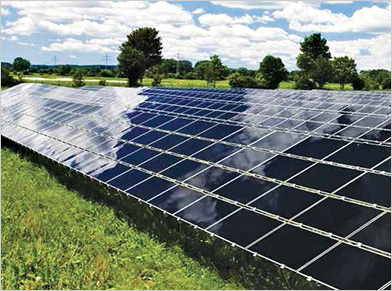
We do not need that heat from the sun which adds up to the HVAC costs thereby making the structure less sustainable and eco- friendly. This is a very healthy debate and mostly we find negative comments on the usage of so much glass. This is primarily because not many understand the true performance of glass. Glass, if treated properly, is an excellent material which has many sustainable uses. Researchers have come up with a solution where glass used for external façade can actually generate electricity using solar power (commonly known as Nano-glass).
The technology, in a nutshell, is the usage of thin photo-voltaic sheets that can be applied on to the glass (Fig. 7). The glass, when exposed to sunlight will charge the electrons present within the photo-voltaic sheet, and store energy. This stored energy, is transferred into rechargeable batteries, generating electricity, which can be used for different purposes. Thus what we get is clean energy using glass.
When we think of façade design, aesthetics definitely play an important role, but we must always consider the properties of sustainability and eco-friendliness of the materials. We must leave a better environment for future generations.
